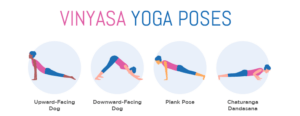The ancient India is where the concept of yoga first emerged. Originally practiced by Jains, Buddhists, and Hindus for spiritual well-being, it is today recognised as an approach for maintaining mental and physical well-being. It has become more and more well-known in the west in recent years, drawing a diverse range of individuals to join yogic communities. People practise various type of yoga all over the world, a few examples being hot yoga, vinyasa, and hatha, which could entail performing specific poses, doing moderate body movements, or engaging in much more dynamic and strenuous forms of exercise.
However, how did yoga begin to dominate the world? The positive effects of practicing various yoga asanas (physical postures), pranayama (breathing techniques), and Dhyana (meditation) are the obvious response. It affects several bodily systems, including the musculoskeletal, neurological, cardiorespiratory, endocrine, and digestive. It is plausible that this has driven up interest to seek yoga as a complementary therapy to aid with a variety of health conditions.
1. Provide pain relief:
Yoga asanas or physical postures and movements can help with relieving lower back pain, neck pain, headaches and many such chronic musculoskeletal conditions by doing gentle movements to help desensitize painful areas, promote mobility, strengthen muscles, and thus promote resilience to carry on your activities of daily living efficiently.
2. Manage mental health:
A combination of physical movements, breathing techniques and meditation can help with management of stress, anxiety, and depression. Research suggests that practicing yoga can help with cessation of smoking and ease the symptoms of withdrawing from alcohol, tobacco, and such substances by calming down the nervous system and thus helping with pain, anxiety, and nervousness.
3. Enhance endurance:
Vinyasas or the dynamic and strenuous form of yoga can increase your heart rate along with strengthening of the muscles to assist you in building your endurance and lung function, helping you climb those wainwrights quicker and without having to stop in between for breath breaks. It can help you tackle conditions such as high cholesterol, high blood pressure, Asthma and COPD.

4. Help modulate symptoms of hormonal disorders:
Yoga helps regulate imbalances in your endocrine system by modulating stress level and release ‘feel good hormones’ such as endorphins and aid your struggle with menstrual cycle irregularities, menopause, diabetes, skin, and thyroid problems. It can also help alleviate symptoms of cancer. Pregnancy yoga can help you prepare for birth and prevent gestational hypertension and stress and anxiety of giving birth.
5. Improve your digestive health:
With a healthy mind and body, people generally incline towards eating healthy, ignoring the bag crisps lying in their kitchen cupboards. There are certain asanas suggested by Ayurveda (Indian medicine) practitioners that helps ease digestive disorders such as flatulence and constipation. Promotes reduction in weight loss and thus fight against obesity.
We have classes available at Kendal Physio so why not give yoga a try. Call us or check availability online at https://kendalphysio.co.uk/kendal-yoga-classes/
